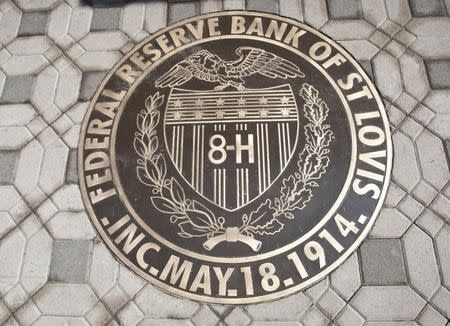Fed's Bullard: low rate vow is 'not helpful,' GDP targeting is

(Reuters) - Forward guidance and bond-buying, two mainstays of global central banking since the 2007-2009 financial crisis, may actually be of little use in jump-starting a moribund economy, a study by a top Federal Reserve official showed on Thursday.
Instead, the best way to spur growth amid a severe economic downturn is to engineer temporarily higher inflation, according to the paper by St. Louis Fed President James Bullard.
"In the framework presented here the forward guidance policy - promising to remain at the zero lower bound beyond the time that the zero lower bound is actually constraining - is not helpful," Bullard wrote with his co-authors, Washington University's Costas Azariadis, University of Sydney's Aarti Singh and Narodowy Bank Polski's Jacek Suda.
"Quantitative easing doesn’t look like a good policy either," he told reporters in a conference call, although the paper's findings in that regard are more equivocal. "What would be a good policy here is nominal GDP targeting, with these special price level adjustments when the zero lower bound threatens."
Most of Bullard's colleagues at the Fed credit forward guidance and bond-buying with averting an even more severe recession and an even slower recovery.
But to Bullard, the Fed's low rates have not done their job, and it is time to assess other approaches.
Boosting inflation temporarily, a form of so-called nominal GDP targeting, would still allow the central bank to target an inflation goal because policymakers would aim for lower inflation during high-growth periods to balance out higher inflation during low-growth times, Bullard explained to reporters.
Adjusting inflation in this way would help households borrow, lend and save at rates that will best keep the economy growing and functioning smoothly, he said.
It's an approach whose roots in academic research go back 40 years, but which has never gained real traction among policymakers, in part because it is difficult to explain and potentially to carry out.
Bullard did not lay out how a central bank would achieve a temporarily higher inflation rate, leaving that detail to future research.
One drawback to nominal GDP targeting, the paper found, is that it can hurt the cash-using segments of the population more than those households that rely on credit, exacerbating already pronounced income inequality.
Still, he said, that drawback can be addressed by targeting a long-term inflation rate and keeping inflation below that level during times of high growth.
(Reporting by Ann Saphir; Editing by Chizu Nomiyama)

